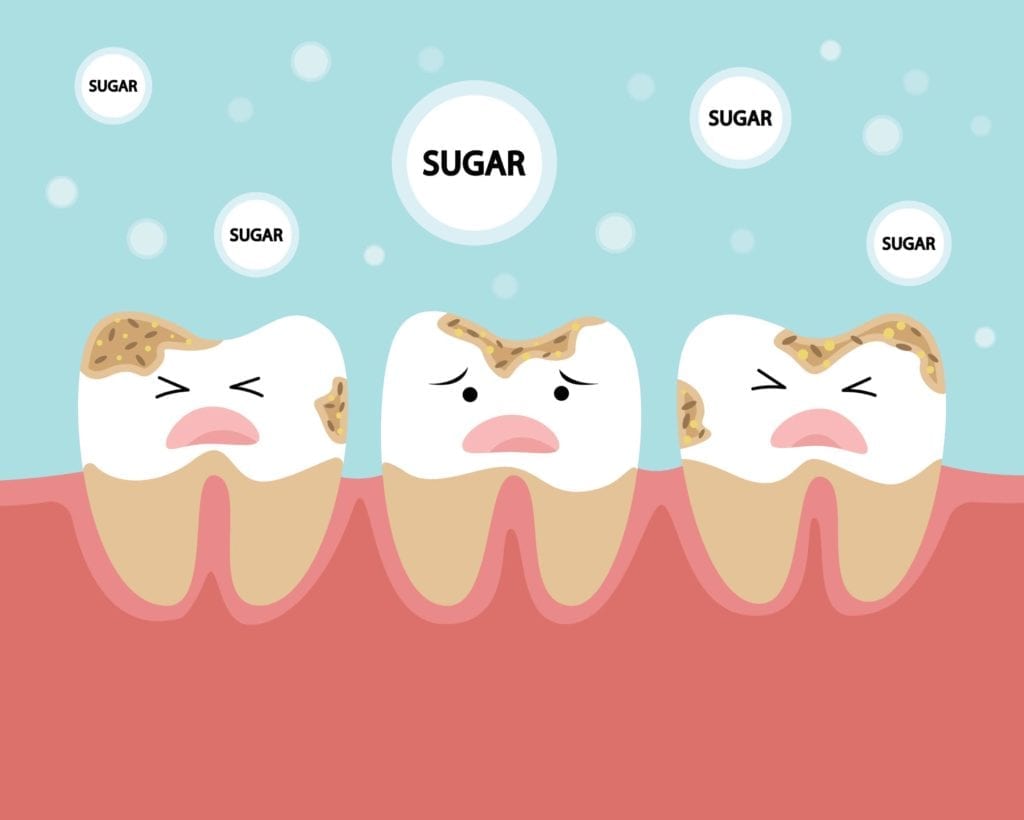Did you know that cavities are extremely common in children? In fact, the National Institutes of Dental and Craniofacial Research found that 42% of children from the age of 2-11 and 59% of adolescents between the ages of 12-19 have cavities. Considering the fact that children can develop cavities starting at the age of 2, this can make one wonder how long it takes for a cavity to form. Just as knowing what causes cavities, knowing how long they take to develop can help you better care for your child’s oral health. In order to determine how long it takes cavities to form, we must first look at what a cavity is and how it forms. This will provide a basis for determining how long it takes a cavity to form, as well as what kinds of factors can affect its development.
What is a cavity?

A cavity is a hole that gradually forms as a result of bacteria found in dental plaque. Plaque is the sticky, clear substance that coats the teeth, catches food particles, and houses naturally-occuring bacteria. Bacteria feed on the sugars and starches in food particles, allowing them to reproduce and to produce acidic waste. When plaque is undisturbed, more bacteria and food particles will accumulate, which means more acidic waste is also produced. Over time, the high concentration of acid erodes the enamel and causes a hole to form.
In children, one common location for a cavity is on the textured surface of the molars and premolars. These are known as pit and fissure cavities and they are common because of the fact that it is hard for children to thoroughly clean towards the back of their mouth. The textured surface also allows plaque to accumulate. While pit and fissure cavities are relatively common, children can also get smooth-surface cavities. Children who regularly drink out of a bottle or sippy cup are especially prone to developing smooth-surface cavities on the upper front teeth. This is often known as baby bottle tooth decay. Finally, children can also develop cavities on their tooth roots, although this is not as common since root cavities are generally seen in coordination with gum recession.
How do cavities form?
Now that we know what cavities are, what causes them, and where they can be found, the next thing to look at is just how they form. Believe it or not, cavity formation is actually a whole process. Here are the five stages of cavity formation:
Stage 1: Demineralization
Enamel is primarily composed of minerals, which is why it is so strong. However, when acid is constantly deposited on the enamel, this causes it to lose minerals and weaken. Demineralization can be seen as white spots on the teeth and, when caught early, it may be able to be reversed by applying a fluoride treatment. Since fluoride contains minerals, it helps to replenish the lost minerals in order to strengthen the enamel.
Stage 2: Enamel Decay
After the enamel has demineralized, then the acids from bacteria will start to erode through it and form a small to medium cavity. Once a cavity has formed in the enamel, it can only be treated by placing a composite filling. Otherwise, the decay will continue. It is important to know that primary teeth have less enamel than permanent teeth, which is why younger children tend to develop cavities.
Stage 3: Dentin Decay
After eroding through the enamel, the cavity will reach the underlying dentin layer. At this point, your child may complain that their tooth hurts, since the dentin layer is sensitive. Once decay has reached the dentin layer, it will start to progress more rapidly since the dentin is easier to erode than the enamel.

Stage 4: Pulp Decay
After passing through the dentin layer, bacteria will work their way into the inside layer of the tooth known as the pulp, which contains blood vessels and nerves. Unfortunately, bacteria inside the tooth cause an infection known as pulpitis, which is painful. At this point, your child’s pediatric dentist may need to perform a baby root canal or a traditional root canal to save your child’s tooth.
Stage 5: Abscess
One main complication of a pulp infection is that it has the possibility of moving down into the tooth roots and forming an abscess at the base of the tooth. Like a pulp infection, this is extremely painful. At this point, the tooth may need to be extracted to prevent further damage.
How long does it take a cavity to form?
Now that we have looked at the various stages of cavity formation, we can look further into just how long it takes for a cavity to form. Generally speaking, cavities usually take years to form, however they can form faster in children and it may only take months. Things like diet, the location of the cavity, and oral hygiene all affect how fast a cavity develops. Since cavities can form quickly in children, especially those with baby teeth, it is important to have your child examined by their pediatric dentist at least twice a year to reduce the risk of cavities, as well as to catch any cavities early on.






